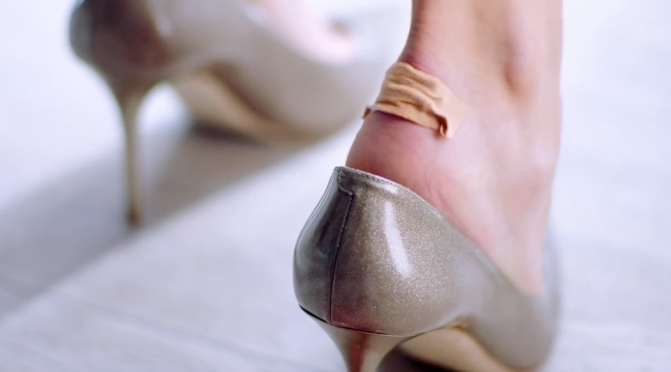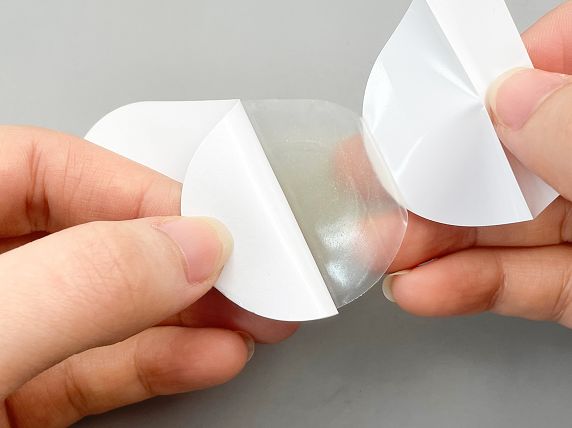At the end of the year, it is inevitable to attend various parties. Many girls will choose to wear high-heeled shoes to match beautiful dresses. Of course, there are also many girls who wear high-heeled shoes. After wearing high-heeled shoes, the heels will be blistered due to friction between the feet and the shoes. Especially when dancing in high heels, our shoes will generate friction and pressure at every step. This kind of blister will also make people feel pain. Therefore, we must learn to prevent blisters. The following summarizes some effective ways to prevent blisters. Just follow me and take a look.
To prevent, start by understanding the causes of blisters on your feet :
a girl walks in high heels for a long time, the skin will be rubbed and pressed by the heel of the shoe, which will affect the blood circulation of the skin, and tissue fluid will accumulate in the damaged area, thus forming blisters. Frictional blisters are small water pockets formed by the accumulation of interstitial fluid between the outer and inner layers of the skin. The shear force generated by movement friction constantly tears the surface layer of the skin and the subcutaneous tissue, causing them to separate and form a gap. At the same time, the capillary Increased permeability fills them with fluid, forming blisters.
How to prevent foot blisters?
1. There are blister plasters specially designed for high heels on the market. It is made of a hydrocolloid material, and there are many styles specially designed for foot skin. It has self-adhesive properties and is ultra-thin and not easy to fall off. Not only does it keep your skin from rubbing into a lot of blisters, but it also makes walking in high heels more comfortable. If you often wear high-heeled shoes, it is best to use this good thing, otherwise, the long-term squeezing will deform the soles and toes of our feet. Although high-heeled shoes are beautiful, they will hurt the body after wearing them for a long time.
2. There is also a simple method, which is to apply hand cream, body lotion, olive oil, etc. on the places where the feet are easy to be worn, which can play a lubricating role. A protective layer is formed between the feet and the shoes to avoid the bloody mess of the skin on the feet due to excessive friction with the leather.
3.Reduces moisture in shoes Wet or wet feet increase friction and the risk of blister formation. In addition to the excessive friction caused by sliding in wet shoes, the moisture will soften the skin and increase the chance of damaging the outer layer of the skin. If you wear breathable, waterproof shoes, it helps keep as much external moisture as possible out of the shoe and limits sweating, unlike waterproof shoes, which can cause sweating.
Also try using an absorbent powder like talc to help keep the inside of your shoe dry, or swap out your socks for a more breathable material that wicks moisture away from your feet.
4. Check the shoe, sometimes the seams and layers of material on the back of the heel can become rough, stitches can come off, or they may be uneven or not conform to the characteristics of your foot. If rough edges are digging into, chafing, or irritating your skin, don't use a bandage on the back of your heel every time—repair the shoe instead. You can choose to sew a chino pad in the rough area of the back of the shoe or send the shoe in for repairs to adjust any cracked seams and stitches.
What should I do if blisters have formed?
If the blister is less than 5 mm, no treatment is required, and the skin will absorb it by itself. If it is a relatively shallow small blister, small in size, it will not affect walking, and if the diameter of the blister does not exceed 5 mm, do not break it. Normally, the body normally absorbs the fluid from the small blisters on its own. If you are worried about accidentally breaking the blisters while walking and causing severe pain, you can put on blister plaster to reduce friction. It can provide a slightly acidic airtight space for the wound, which is conducive to wound healing. If the blister is large enough to interfere with walking and the diameter of the blister is greater than 5 mm, the blister is burstable. Pay special attention to disinfection when the blisters are broken. It is recommended to follow the following 3 steps to avoid infection.
For more information on Innomed blister plaster, refer to the previous articles. If you have customized needs, you are welcome to contact us; we will serve you wholeheartedly.
At Longterm Medical, we transform this data by innovating and developing products that make life easier for those who need loving care.
Editor: kiki Jia
Date: January 9, 2022

 English
English عربى
عربى Español
Español русский
русский 中文简体
中文简体








